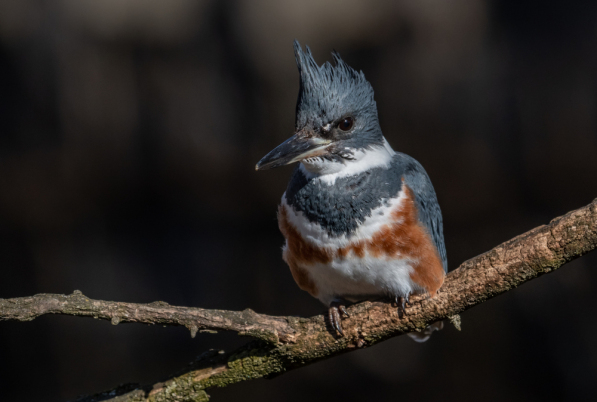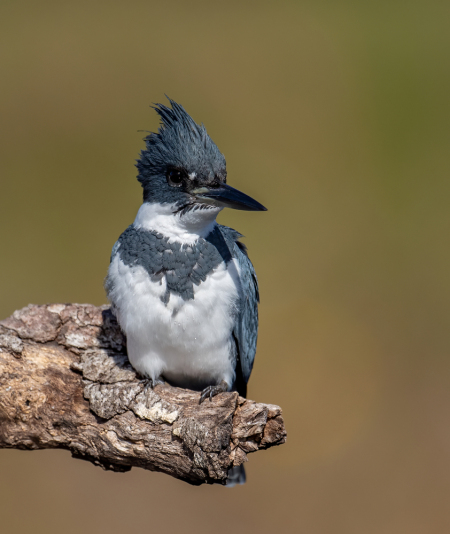

The Belted Kingfisher(Megaceryle alcyon) is a bird classified in the order Coraciiformes, and the family Alcedinidae.
Physical Characteristics
The Belted Kingfisher has a crest on its head. Both the male and female have a blue-gray back and chest band. The female has rust colored bands on her sides and a rust colored band across her lower breast. The Belted Kingfisher is one of the few species in which the female is more brightly colored than the male.
| Length | 28-35 cm(11″-1’1.8″) |
| Wingspan | 48-50 cm(1’6.9″-1’7.7″) |
| Weight | 140-170 grams(4.9-5.9 oz) |
*Subspecies
The Belted Kingfisher is classified as a monotypic species.
Range
Belted Kingfishers breed throughout North America.
They winter throughout much of North America, with the exception of all Canadian provinces, excluding British Columbia. They also winter in Mexico, Panama, and Costa Rica.
Sightings in South America have been recorded.
Habitat
Belted Kingfishers live near lakes, ponds, rivers, streams, mangroves, swamps, and estuaries.
Breeding
Belted Kingfishers nest in burrows that they excavate in earthen banks. A pair will begin excavating the nest during courtship. The burrows are usually near water, but other areas farther from water are sometimes used; these peculiar nest sites include; ditches, landfills, and gravel pits. Both the male and female take part in excavating the burrow, however the male spends about twice the amount of time excavating as the female.
The clutch size is 5-8 eggs. A Belted Kingfisher’s egg is pure white, and elliptical to ovate in shape. The length of an egg is 3 to 3.7 cm(1.2 to 1.5 inches) long, and the width is 2.5 to 2.9 cm(1 to 1.1 inches) wide. And weighs 10-14 grams(0.4 to 0.5 ounces). The incubation period is 22 to 24 days. The hatchlings are featherless, their flesh is pink, and their eyes are closed. A hatchling weighs 9 to 13 grams.
Diet
Belted Kingfishers eat primarily fish, but also eat amphibians, crustaceans, molluscs, insects, reptiles, young birds, small mammals, and berries.
Conservation Status
The Belted Kingfisher is listed as least concern.
